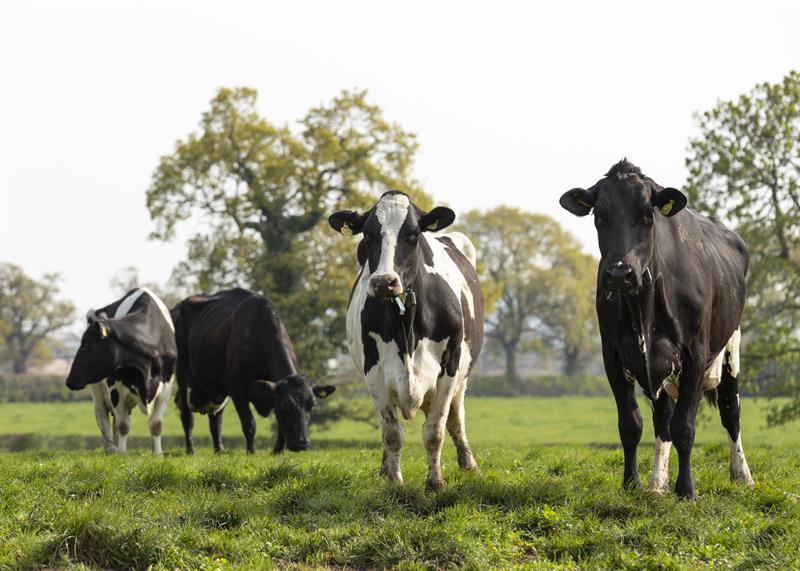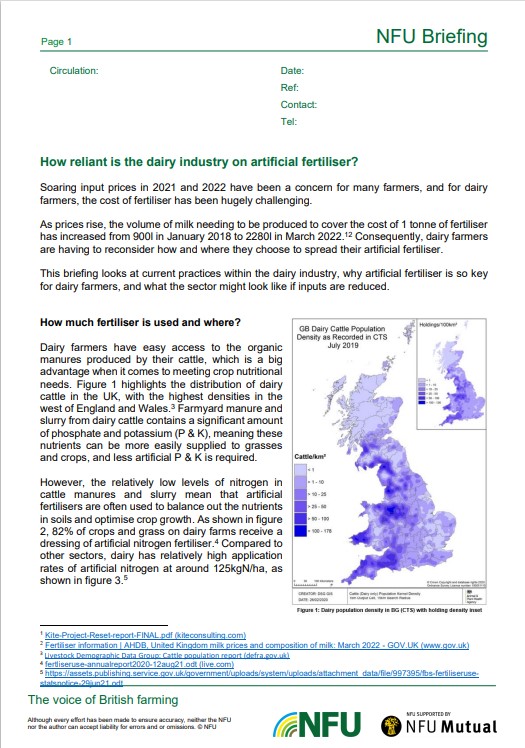The NFU dairy team has been researching the use of artificial fertiliser in the dairy industry to inform our lobbying work with stakeholders and policymakers.
In January 2018, 900l of milk could pay for one tonne of fertiliser. In March 2022, 2280l of milk was needed to cover the cost of one tonne of fertiliser.
How much fertiliser is used and where?
In the UK, over 317,000 tonnes of ammonium nitrate fertiliser were applied to grassland across all sectors of agriculture in 2020.
Fertiliser use on dairy farms is a significant proportion of this, with an average application rate of around 125kgN/ha.
Balancing the nutrient content of soils
Dairy farmers have easy access to the organic manures produced by their cattle, which contain significant amounts of potassium and phosphate for meeting crop nutritional needs. However, one tonne of cattle farmyard manure contains only 6kg of nitrogen and one tonne of cattle slurry contains only 2.6kg of nitrogen.
Low levels of nitrogen in cattle farmyard manure
Such low levels of nitrogen in cattle farmyard manure and slurry means that 82% of crops and grass on dairy farms receive a dressing of artificial nitrogen fertiliser.
This helps to optimise crop growth and ensure enough high-quality grass and silage is produced.
Legumes and nitrogen fixing plants
Growing legumes and nitrogen fixing plants among grass is a long-standing alternative to artificial fertiliser.
Almost 70% of dairy farms already use clover or legumes in their grass sward: one of the highest rates among the different farm types.
Potential consequences of reduced artificial fertiliser use
Saving costs by dramatically decreasing applications of artificial fertiliser can cause reduced production of forage and increased costs of bought-in feed.
Without access to affordable nitrogen fertilisers, the volume and quality of silage will be impacted. This will lead to a reduction in both the volume and quality of milk produced per cow, and/or an increase in bought in feed.
For more detail, read our briefing in full below.

